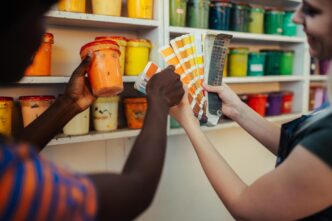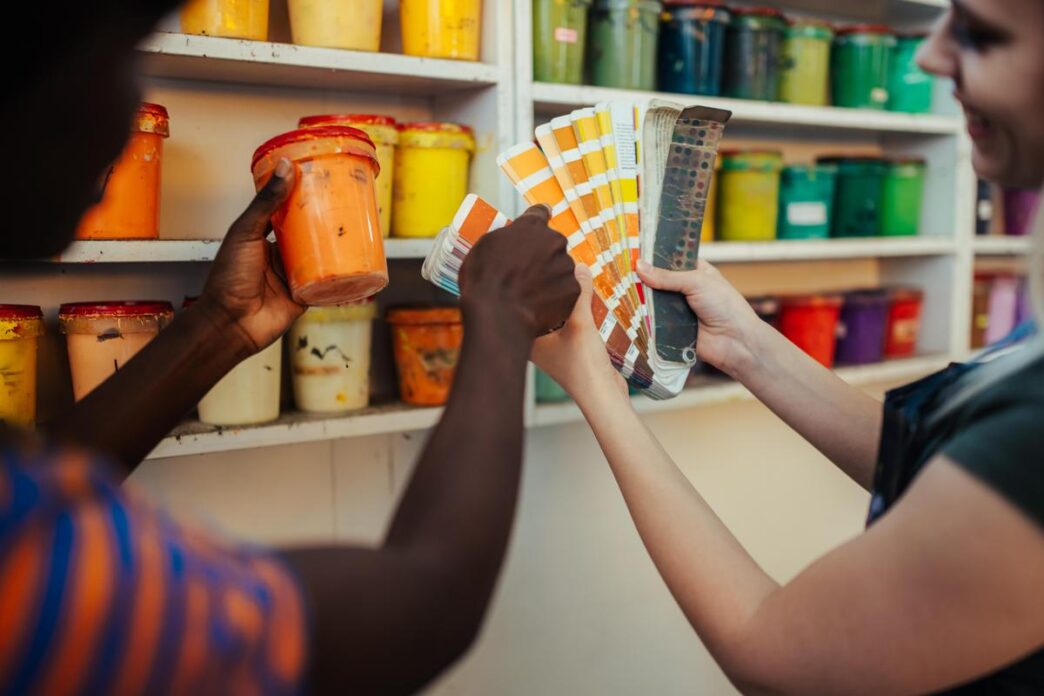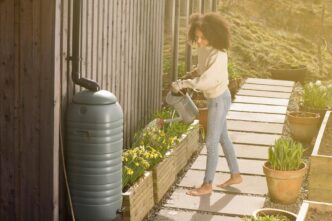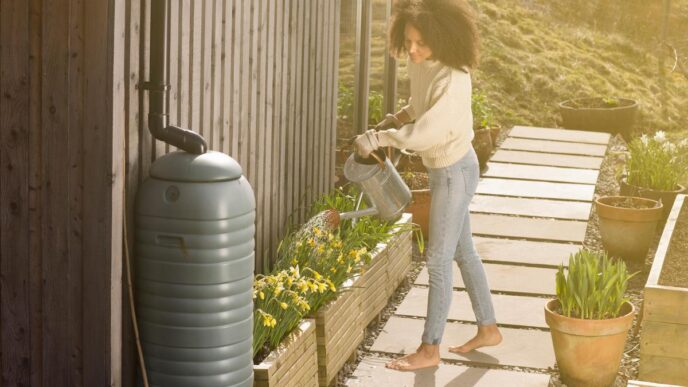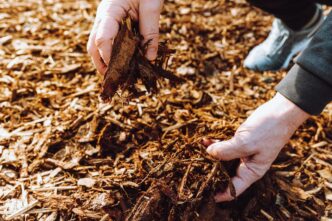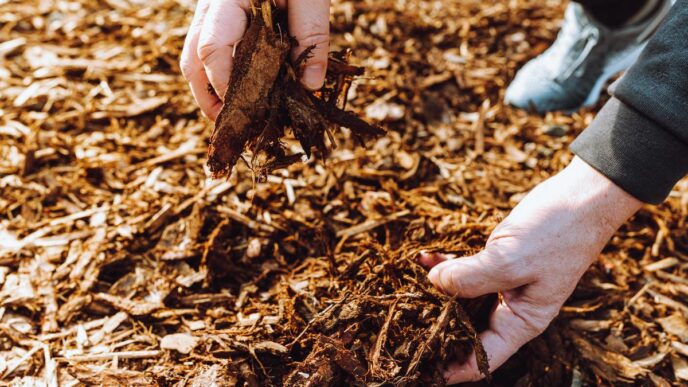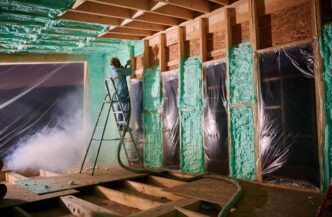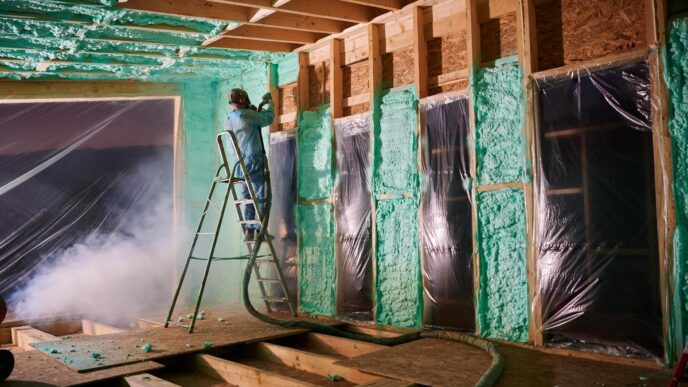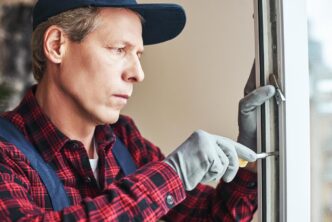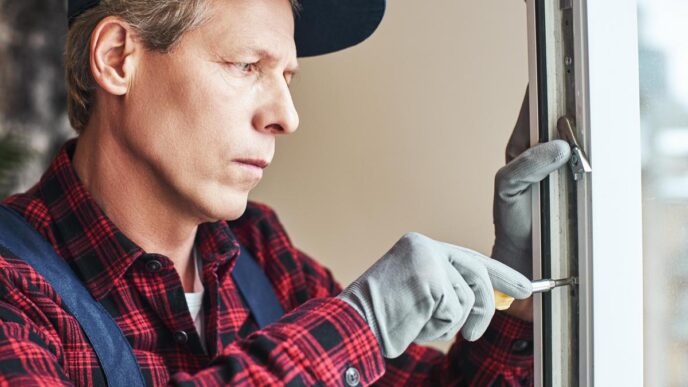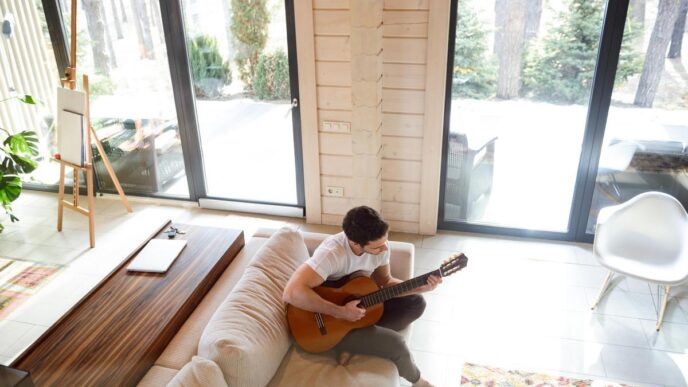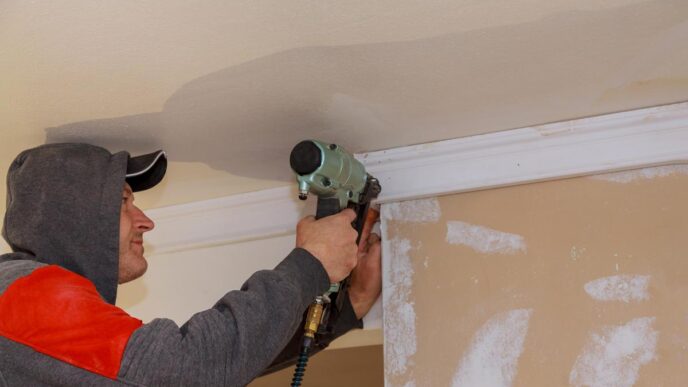Key Takeaways:
- Paint Types: Latex for walls/ceilings, oil-based for wood/furniture, chalk for a vintage look.
- DIY Needs: Exterior paint for outdoors, interior for indoors. Match paint type to project location.
- Paint for Materials: Use latex on wood, oil-based on metal, spray paint on plastic.
- Paint Shopping: Consider coverage, VOC levels, view colors in different lights, prioritize durability.
- Paint Finishes: Satin hides flaws, gloss highlights them; choose based on room’s style/function.
- Paint Durability: High-quality paint lasts longer; surface prep is key. Use primer for better adhesion.
- Professional Finish: Use painter’s tape, quality brushes, and clean tools for crisp results.
- Testing Samples: Apply in different lights; ensure clean, smooth surfaces before painting.
Ready to tackle your next DIY project but stuck on choosing the right paint? The right paint can make your creations pop and last longer. From gloss to matte, colors to finishes, there’s so much to decide. Let’s break it down and find the best paint for your project needs. This guide will take you through types, finishes, and durability tips to make your project shine.
How Do You Choose the Right Paint for DIY Projects?
What are the Main Types of Paint for DIY?
Choosing the right paint can make or break your project. For DIY tasks, you have several paint types to consider. Latex paint is popular because it is easy to clean and dries fast. Oil-based paint offers a smooth finish and durability, making it good for furniture. Chalk paint has a vintage vibe and is great for a shabby-chic look.
How to Match Paint Types with DIY Needs?
Now, let's break down how these paints fit your needs. Latex paint suits walls and ceilings. It is easy to use and quick to dry. Pick oil-based paint for woodwork or furniture when you need a hard coating. Go for chalk paint if you are planning to give old furniture a fresh, rustic look.
What to Consider When Shopping for Paint?
When buying paint, a few key points are crucial. First is coverage. You want a paint that needs fewer coats for a rich look. Also, check for VOCs due to health concerns; low or zero-VOC options are better. Always look at color swatches in the space you'll paint. Colors react to light, so view them at different times of day. Lastly, consider the paint's durability. Higher quality may cost more but lasts longer, saving your time and effort in the long run.
For in-depth guidance, check how to choose paints for your upcycle projects. Good luck on your DIY adventure!
What Are the Best Paint Options for Specific DIY Projects?
What Paint is Best for Furniture Restorations?
I often choose chalk paint for furniture makeovers. It sticks to surfaces well, so there's no need to sand first. This makes it perfect for projects that need a quick refresh. Chalk paint also gives a matte finish, giving pieces a vintage look. It’s great for turning an old table or chair into a stunning focal point in any room.
How to Choose Paint for Indoor vs. Outdoor DIY Tasks?
When painting outdoors, always use exterior paint. It withstands weather changes and harsh conditions. For indoor projects, interior paint works best. It is made to handle stains and doesn't release bad smells. Make sure to choose paint that matches your project's location. This makes your work last longer and keeps it looking fresh.
What Paint Works Best for Various Materials?
Different materials need different paint types for the best results. For wood, latex paint works well because it expands and contracts without cracking. Metal surfaces do best with oil-based paint, as it prevents rust and provides a tough finish. If painting plastic, use spray paint made for plastic. It sticks better and avoids peeling. Knowing your material helps in choosing the perfect paint. It ensures your project is strong and looks as good as you’ve imagined.
For example, if I’m painting an old metal chair, I use oil-based paint. This choice prevents rust and keeps the chair shiny and new. On the other hand, when working with plastic garden pots, I go for spray paint. It covers well and doesn’t chip off easily. Choose your paint with care, and your DIY project will shine!
How Do Paint Finishes and Colors Affect Your DIY Outcome?
How Do Different Paint Finishes Impact Your Project?
When it comes to paint finishes, they can transform your space in special ways. A flat finish hides wall blemishes but might not hold up in busy spots. Eggshell feels like a flat finish but cleans better. Semi-gloss and gloss finishes add shine and make cleaning a breeze. They're great for kitchens and bathrooms. Flat finishes work best in living rooms, adding a calm vibe. The finish choice plays a big role in how your space feels.
How to Choose the Right Color for Your Space?
Picking a color sets the mood of your room. Warm colors like red bring energy, while cool blues calm things down. Think about the sun's light in the room too. Well-lit rooms do better with darker shades, while dim spaces shine with light tones. Check out paint swatches before you buy. Hold them up in the room and see how they shift from sunlight to night light. Bold or soft, your choice should match your mood goals.
What’s the Difference Between Satin and Gloss Finishes?
Satin and gloss finishes differ in sheen and durability. Satin offers a soft sheen, hiding small flaws and cleaning up nicely. It's the middle ground—good for family rooms. Gloss, on the other hand, shines bright and can look more modern. It highlights details but shows flaws too. It works well for trims or places needing a wow factor. Comparing satin vs gloss finishes can help decide what’s best for each room’s style and function. Consider what fits your room's needs before making a choice.
How Can You Ensure Long-lasting Durability in Your Paint Jobs?
What Factors Affect Paint Durability?
Different factors change how long a paint job lasts. Ever wonder why some paint peels off quickly while others last for years? The type of paint is crucial. High-quality paint resists cracking and fading better. Also, the weather plays a big role. Moisture, sunlight, and temperature changes all hurt paint surfaces over time. Choose weather-resistant paint if you live in a harsh climate. Surface preparation is key too. A clean, smooth surface holds paint better and longer. Not skipping this step can make all the difference.
Why is Primer Important Before Painting?
Primer is like a secret weapon for paint jobs. It sticks the paint to surfaces. So, why bother with primer? The simple answer is it makes the paint stick better and last longer. Primer also covers up marks and stains. You get a smooth, even finish when you use it. Consider the primer your painting sidekick. It improves how paint covers walls, saving you effort and trouble later. Use one that's right for your surface, such as wood or drywall, for the best results.
How to Avoid Spills and Drips for a Professional Finish?
Ever had trouble with sticky paint drips? They can spoil a neat job. To avoid spills and drips, use painter’s tape on edges. Tape helps you paint crisp lines without worry. Choose the right brush or roller, too. A quality brush or roller spreads paint evenly and reduces dripping. Clean your tools after each use to keep them in top shape. If possible, paint in small sections. This way, you can focus and reduce errors. Lastly, control the paint on your brush. Less paint avoids mess and gives a clean look. For more tips on choosing paint, click here.
How to Test and Evaluate Paint Samples Like a Pro?
Testing paint samples is like trying on clothes before a big day. You must see how colors look in different lights. Always apply paint samples in both natural and artificial light. Use a small patch on your wall. Live with it for a few days at different times. It helps you decide if the color fits your vision.
Preparing your surface is just as crucial as choosing the right paint. A smooth surface gives better results. Clean your area. Remove any dust or grime. Sand any rough spots. If the surface is in bad shape, use a primer first. Primer makes the paint stick better and last longer. Learn more about preparing surfaces to get professional results.
Painting furniture is a fun way to make old things new. Start by cleaning the furniture well. Sand the surface lightly for best results. Use slow strokes with a brush or roller for an even coat. Wait for the paint to dry between coats. Follow these simple tips for great results.
Choosing the perfect paint for a project is important. Try before you buy with samples. Again, clean your surfaces for a smooth finish. These steps can make all the difference in your DIY success.
Conclusion
Choosing the right paint for your DIY projects can be tricky. We explored main paint types, their uses, and matching them to your needs. We also covered the best paint for furniture, indoor versus outdoor tasks, and finishes. Remember, paint color and finish affect your results. Don't forget factors like primer and paint durability. Testing samples and prepping surfaces are key steps for success. With the tips shared, you're now ready to take on any DIY paint project with confidence. Happy painting!
